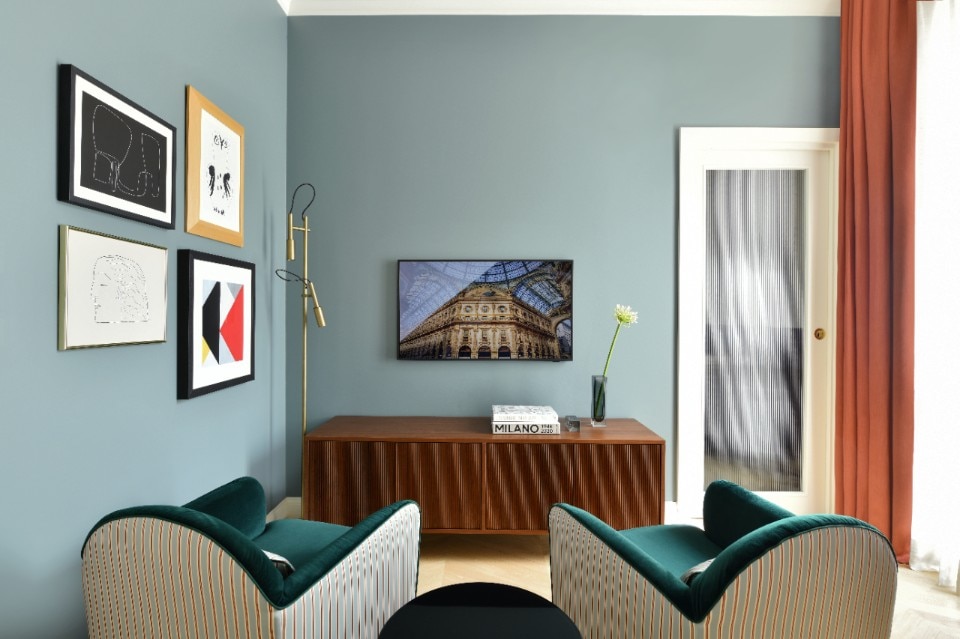Is there such a thing as the Milanese house? The question remains unanswered, despite numerous publications, some of them valid, on the work of architects and designers who offered solutions over the 20th century that now belong to the collective imagination. But the question is fascinating for another reason, because it goes beyond the ontological status of the creative disciplines of architecture and design to strike at the real issue at hand: the essence of the “bourgeoisie”, the great absentee of our society. An original and brilliant response, both in concept and execution, comes in the form of Casa Brivio, a project conceived by Filippo and Alberico Brivio Sforza and developed by Milanese architecture studio Matteo Thun & Partners, who entrusted the interiors to Cassina Custom Interiors. Located in the heart of Milan inside two buildings from the 1960s and 1970s, between Torre Velasca and the Columns of San Lorenzo, Casa Brivio is inspired by the style and design of Luigi Caccia Dominioni. It offers a sophisticated public a reception area and 16 rooms and apartments, all designed in a classic and elegant style that reproduces a mix of design, architecture and fashion in a purely bourgeois idiom.
Casa Brivio is a tribute to milanese modernism
In the heart of Milan, Thun & Partners' design is inspired by the great names of Milanese architecture, from Luigi Caccia Dominioni's details to Ponti's decorated ceiling.
Photo Marco Bertolini
Photo Marco Bertolini
Photo Marco Bertolini
Photo Marco Bertolini
Photo Marco Bertolini
Photo Marco Bertolini
Photo Marco Bertolini
Photo Marco Bertolini
Photo Marco Bertolini
Photo Marco Bertolini
Photo Marco Bertolini
Photo Marco Bertolini
Photo Marco Bertolini
Photo Marco Bertolini
Photo Marco Bertolini
Photo Marco Bertolini
Photo Marco Bertolini
View Article details
- Walter Mariotti
- 25 July 2024

Outside, the terracotta pink, cream-coloured terrazzo floor and tropical plants reflect the typical taste of modernism, where Cassina classics – such as Marco Zanuso’s Lady chair and Franco Albini’s Cicognino side table – confirm a timeless aesthetic. The reception, which recalls early 20th-century Milanese entrance halls but stripped of their austerity, has a ceiling decorated with a diamond pattern and wall panelling, a tribute to Domus’s founder Gio Ponti. One ascends to the apartments via the magnificent spiral stairs, finished in hydraulic lime that echoes the finish of the facade and featuring Murano glass lamps by Caccia Dominioni for Azucena.
Entering the rooms and apartments, which are all different, a homely feeling is conveyed by the interior design that is in line with the genius loci and inspired by the atmosphere of mid-20th-century Milanese modernism. The key product is the wardrobe, which becomes a highly functional architectural element separating the sleeping area and giving the kitchenette a discreet presence. The finely designed bathrooms, meanwhile, highlight elegant materials such as brass, inspired by the work of Piero Portaluppi.
Also worthy of mention are refined details such as the Melanzana handles by Caccia Dominioni and the ribbed glass, which emphasise the concept of Casa Brivio by centring it on the gold standard of Milanese homes, of which it offers a contemporary iteration that redeems the lost aesthetic, and hence values, of a global overclass increasingly interested in Milan.